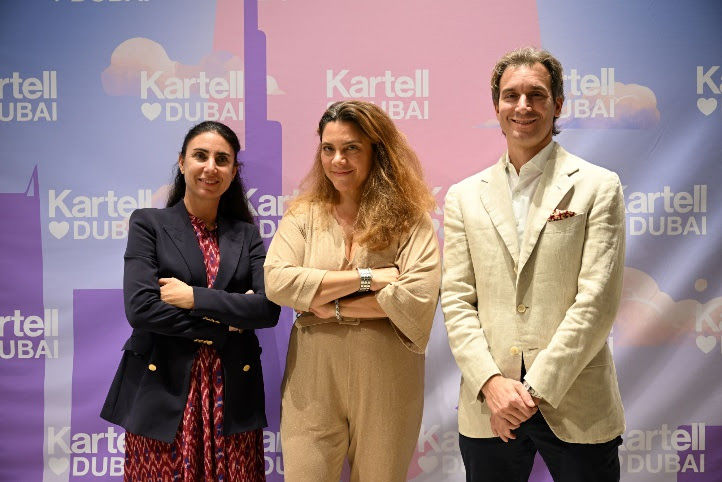Wedding Fashion in India: A Vibrant Ode to Celebration and Culture
- adsmoralmoda
- Mar 31, 2023
- 3 min read
Text by Shalini Passi
The city of lakes and artistic legacies with royal imprints, Udaipur is a land of majestic magnificence. Erstwhile capital of the Mewar, founded by Maharana Udai Singh II in the sixteenth century. The land is festooned with white marble palaces, juxtaposed against the blue waters of the lakes. Also known as the "Venice of the East," Udaipur has garnered fame for the scenic ambience that one can enjoy while sitting near Lake Pichola or Lake Fatehsagar.
The sublime beauty of weddings
The scenic locales of Jag Mandir Palace, Leela Palace, and Udai vilas are a few of the known imprints of social and cultural history that have become the ultimate wedding destinations. The heritage found in Udaipur and its surrounding regions beautifully complements the inherent sublime beauty of weddings.
Owing to the rich legacy of painting and architecture patronised by the members of the royal family and the noblemen, the palaces, courtyards, hotels, and even the vintage bazaar settings even today have a touch of traditional art practices and mediums.

Shalini Passi wears the Lehenga by Mayyur Girotra
The visual vocabulary of the place is so intrinsically tied to its traditional roots that Udaipur is associated with an aura of celebration, luxury, tradition, and heritage. It all comes together seamlessly, like painting a picture embedded in decadent elegance.

The grand wedding ceremony and wedding apparel
The grand affairs are meticulously planned, from the sangeet ceremony to the mandap designs where the pheras take place; all the traditional rituals are accentuated by ornate surroundings. Historically, there has been a deep connection between the social practices, the region, and the attire, which is prominently explored in the attire worn.
Any piece of clothing is a facet of expression, a token of material culture, where every thread used in their production carries rich history. The designs reflect age-old techniques such as zardozi from Persian culture, chikankari that developed in Lucknow, and mirror-work, or Sisha from Gujarat and Rajasthan, an eclectic history of Indian traditional techniques and contemporary sensibilities. Undoubtedly, Indian weddings are a lavish affair, where the expression of celebration is beautifully manifested in the apparel and the hues that simply add to the vibrancy of the entire occasion.

The intricacy with which the material history of clothing is connected to societal rituals and traditions is of utmost importance when observing the ever-versatile designs that have developed in the Indian fashion industry. Known for its long history of cultural heritage, Rajasthan as a region has been connected to the aesthetic of Indian weddings since time immemorial. There is a lot of symbolism embedded in the rituals and customs, most prominently seen in the colours that are used in the weddings: every hue of Indian yellow, reds, and mauves.

Shalini Passi wears outfit by Abu Jani & Sandeep Khosla

Indian couture and designers
In India, every form of creative expression has a long history of tradition attached to it that is embedded in the whole ceremony, ranging from the designs of tapestries to the clothing worn. Furthermore, numerous Indian designers have incorporated these ideas alongside innovation to create clothing lines that are elegantly traditional and intricately interwoven with the local artisanal traditions. Celebrated designers like Abu Jani Sandeep Khosla and Mayyur Girotra, Shantanu & Nikhil, Gaurav Gupta, Falguni Shane Peacock, and Manish Malhotra, inspired by the wedding season, have brought forth the mystifying majesty of Indian apparel, deeply rooted in the beauty of Indian textiles.

The orange outfit from the couture house of Abu Jani and Sandeep Khosla, showcases an ideal mix of Indian handicrafts and artisanal input with contemporary silhouettes. Founded in 1986 by Abu Jani and Sandeep Khosla, the brand has established itself as India's leading haute couture house, shaping the aesthetics of Indian wedding attire.

A few of the prominent aspects associated with the brand are the ever-evolving designs that seamlessly correspond to the dynamic demands of the contemporary age.
Another magnificent example is one of India’s foremost fashion influencers and celebrated designers, Mayyur Girotra, who has cemented his place in the history of fashion and Indian popular culture. The designs have a classic charm that has efficiently evolved over the years while maintaining an inherent essence of elegance and decadence.
The cultural legacy and wedding fashion
There are intricate connections between the rich cultural legacies of Indian weddings and the history of wedding fashion that are most prominently explored in the highly ornate patterns, designs, and styles that have evolved over the years. Under the contemporary lens, the designs are seen in isolation in ordinary settings, but on closer observation, they are imprints of the long-held traditions whose remnants are found in Indian paintings, photographs, textual sources, and conserved textiles. The wedding designs are an ode to that rich history, as witnessed in the outfits, which are remarkably complimented by the heritage of Indian traditions, rituals, and customs.
By Shalini Passi
Images Courtesy: Shalini Passi
collector; Patron; Philanthropist; Advisor and Artist.








Comments